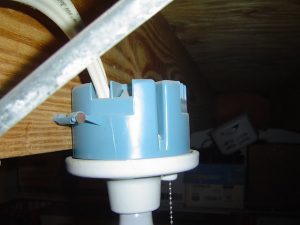Step-by-Step Instructions for Installing Electrical Junction Boxes
By Mark J. Donovan
|
|
When splicing or joining electrical wires to feed power to electrical devices, it is unacceptable to simply wire-nut twist the wires together and leave them exposed behind a wall. An electrical junction box is required for this type of situation per the National Electrical Code.
Installing electrical junction boxes is easy to do, and they are very affordable so there is no valid reason to not use them. On the contrary, there is every reason to install them when splitting or joining electrical wires. First and foremost an electrical junction box protects humans from the threat of an electrical shock or fire. |
They also protect the electrical connections from becoming damaged by dust, water and other objects that could come in contact with them.
The first step to installing an electrical junction box is to select the right one for the job. Make sure you pick one that is appropriately sized for the size and number of electrical wires and connections you need to make in the junction box. Also, make sure to select a junction box that meets the environmental application. The National Electrical Manufacturers Association (NEMA) has a rating system for junction boxes, so make sure you select one per their rating system.
| After selecting the appropriate electrical junction box, mount it to the wall, or wall studs with the recommended fasteners.
Next, pull electrical wires into the installed electrical junction box. Make sure to pull the wires into the box so that 6 inches of each wire bundle (Romex cable) hangs out of the box. Also, make sure they are all of the same size. Never connect different gauge wires together as this can lead to an electrical fire. |
 |
Then cut away the protective sheathing from each Romex wire bundle to expose the separate ground, white and black/red wires.
Then, using wire strippers, strip back each white/black/red wire about 5/8 to ¾ of an inch.
Then carefully push all of the wires into the installed electrical junction box, making sure not to break any wires in the process.
Finally, seal the electrical junction box with its cover plate to complete the electrical junction box installation.
For help on building a new custom home, see HomeAdditionPlus.com’s New Home Construction Bid Sheet. The New Home Construction Bid Sheet provides you with the knowledge on how to plan a custom home building project, and what to look for when hiring contractors for your new home construction. It also includes a detailed cost breakdown table and spreadsheet for estimating your own new home construction building costs.
Related Information
- What you Need to Know about Electrical Junction Boxes
- Plastic Sheathing Electrical Wire Video
- How to Fix a Loose Electrical Outlet
Additional Electrical Wiring Resources from Amazon.com
 |
 |
Free Home Addition Price Quotes with No Obligation!
Fill out our 3-5 minute quick and easy form, and receive a free price quote on a house addition from one of our prescreened and licensed home addition contractors. This process is free and there is no obligation to continue once you receive your house addition price estimate.

